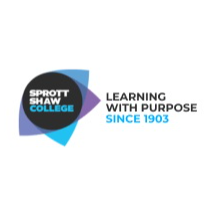• PTE
PTE Read Aloud: Sample Questions, Scoring Criteria, Tips and Tricks
18630 Reads
3 min Read
In the Speaking phase of the exam, PTE read aloud questions comes first. One of these activities is Read Aloud, which demands students to read a specific paragraph aloud within the time limit. Want to improve the PTE Academic read-aloud test score? Read the blog to know the sample questions, scoring criteria, tips and tricks for PTE Speaking Read Aloud.
Table of Contents
- • Understanding the PTE Read Aloud Scoring Criteria
- • Types of paragraphs to read aloud for PTE success
- • Sample Read aloud PTE questions and passages:
- • Strategies for PTE read-aloud
- • Tips for effective read-aloud practice
- • Common mistakes to avoid in PTE Read Aloud
- • Resources and tools for PTE read aloud practice:
Understanding the PTE Read Aloud Scoring Criteria
• Content
• Pronunciation
• Oral Fluency
Also read: PTE Eligibility
Types of paragraphs to read aloud for PTE success
• Texts for academic purposes
• News articles
• Reports
• Factual texts
Sample Read aloud PTE questions and passages:
Passage 1: AI
Also read: PTE Registration
Strategies for PTE read-aloud
• A general overview of the passage
• Pronunciation practice
• Pay attention to intonation and stress
• Take a video
• Keep track of time
Tips for effective read-aloud practice
• Warm-up
• Read with the expression
• Make use of a mirror
• Establish objectives
Also read : PTE Exam pattern
Common mistakes to avoid in PTE Read Aloud
• Reading too fast
• Skipping punctuation
• Focusing solely on pronunciation
• Concentrating primarily on pronunciation
• Ignoring feedback
Resources and tools for PTE read aloud practice:
• PTE practice books
• Include Online resources
• Tools for Pronunciation
• PTE courses
FAQ
Get great articles direct to your inbox
The latest news, articles, and resources, sent straight to your inbox every month.
Popular Universities to Study Abroad
World class education waiting for you.

California State University - Monterey Bay
California, USA • 38 Programmes
Tuition Fee : USD 13000-13000 / year

Middlesex University - Dubai Campus
Dubai, UAE • 136 Programmes
Tuition Fee : AED 62500-63000 / year

Park University - Parkville campus
Missouri, USA • 74 Programmes
Tuition Fee : USD 16000-17000 / year

East Asia Institute of Management
Central Region, Singapore • 50 Programmes
Tuition Fee : SGD 0-0 / year

Sprott Shaw College - Osoyoos College Campus
British Columbia, Canada • 19 Programmes
Tuition Fee : CAD 10000-38000 / year



Popular English Language Proficiency Exams
Blogs and Articles
Curated content to keep you updated on the latest education trends, news and more.
Updated on • Jul 17,2025 05:33 PM IST • USA
PTE Accepted Universities in Australia
Updated on • Jul 17,2025 05:09 PM IST • PTE
Part-Time Jobs for International Students in Australia
Updated on • Jul 17,2025 03:44 PM IST • Australia
Updated on • Jul 12,2025 04:02 PM IST • USA
Updated on • Jul 11,2025 11:32 AM IST • Education
CPT vs OPT: Meaning, Difference, and How to Apply
Updated on • Jul 11,2025 10:40 AM IST • USA
Masters in Computer Science in UK: Top Colleges, Eligibility, Scholarships
Updated on • Jul 10,2025 11:29 AM IST • study in the UK
Highest Paying Jobs in the World
Updated on • Jul 08,2025 01:40 PM IST • Study Abroad
MBA in Australia for Indian Students: Best Universities, Requirements, Scholarship, Courses, Jobs
Updated on • Jul 08,2025 01:35 PM IST • Australia
Canada vs Australia: Which Country is Better for Indian Students in 2025?
Updated on • Jul 07,2025 12:46 PM IST • Education
France vs Germany: Which Is Better for International Students?
Updated on • Jun 30,2025 05:15 PM IST • Education
Top 10 Agricultural Universities in USA
Updated on • Jun 27,2025 05:25 PM IST • USA
Most In-Demand Future Careers in 2025
Updated on • Jun 26,2025 04:41 PM IST • Education
How Much Do Nurses Make in the U.S.?
Updated on • Jun 23,2025 03:59 PM IST • USA
Updated on • Jun 21,2025 02:00 PM IST • USA
MBA in UK: Universities, Eligibility, Types, and Career Opportunities
Updated on • Jun 19,2025 04:09 PM IST • UK • study in the UK
Scholarships in France for Indian Students
Updated on • May 29,2025 05:22 PM IST • France
Intakes in Dubai for Indian Students
Updated on • May 27,2025 03:34 PM IST • Study in Dubai
France Student Visa 2025 – Requirements, Fees, Checklist & Application Process
Updated on • May 23,2025 03:36 PM IST • France
MBA in France for Indian Students in 2025
Updated on • May 22,2025 05:35 PM IST • France
Related Blogs and Articles
A little effort to provide an authentic and reliable content for keen readers!!
PTE Accepted Universities in Australia
Updated on • 17-07-2025 • PTE
PTE Score Chart 2025: PTE Exam Scoring System & Calculation
Updated on • 09-04-2025 • PTE
PTE Exam Centers in India 2025: Check City Wise PTE Exam Centers
Updated on • 16-01-2025 • PTE
How to score 90 in PTE-A Exam?
Updated on • 25-10-2024 • PTE
PTE Accepted Universities in USA
Updated on • 03-02-2024 • PTE
PTE Exam Dates 2024: Check Month-Wise Exam Slot Booking
Updated on • 15-01-2024 • PTE
PTE Speaking: Repeat Sentence Tips and How to Answer Short Questions
Updated on • 11-08-2023 • PTE
A Complete Guide on PTE Personal Introduction
Updated on • 11-08-2023 • PTE
PTE Describe Image- A Comprehensive Manual
Updated on • 10-08-2023 • PTE
Vital Last-Minute Preparation Tips for PTE
Updated on • 06-07-2023 • PTE
PTE Read Aloud: Sample Questions, Scoring Criteria, Tips and Tricks
Updated on • 28-06-2023 • PTE
Common Mistakes in Writing Task of PTE- Academic
Updated on • 22-06-2023 • PTE
Best PTE training institute in Chandigarh - Canamprep
Updated on • 11-05-2023 • PTE












